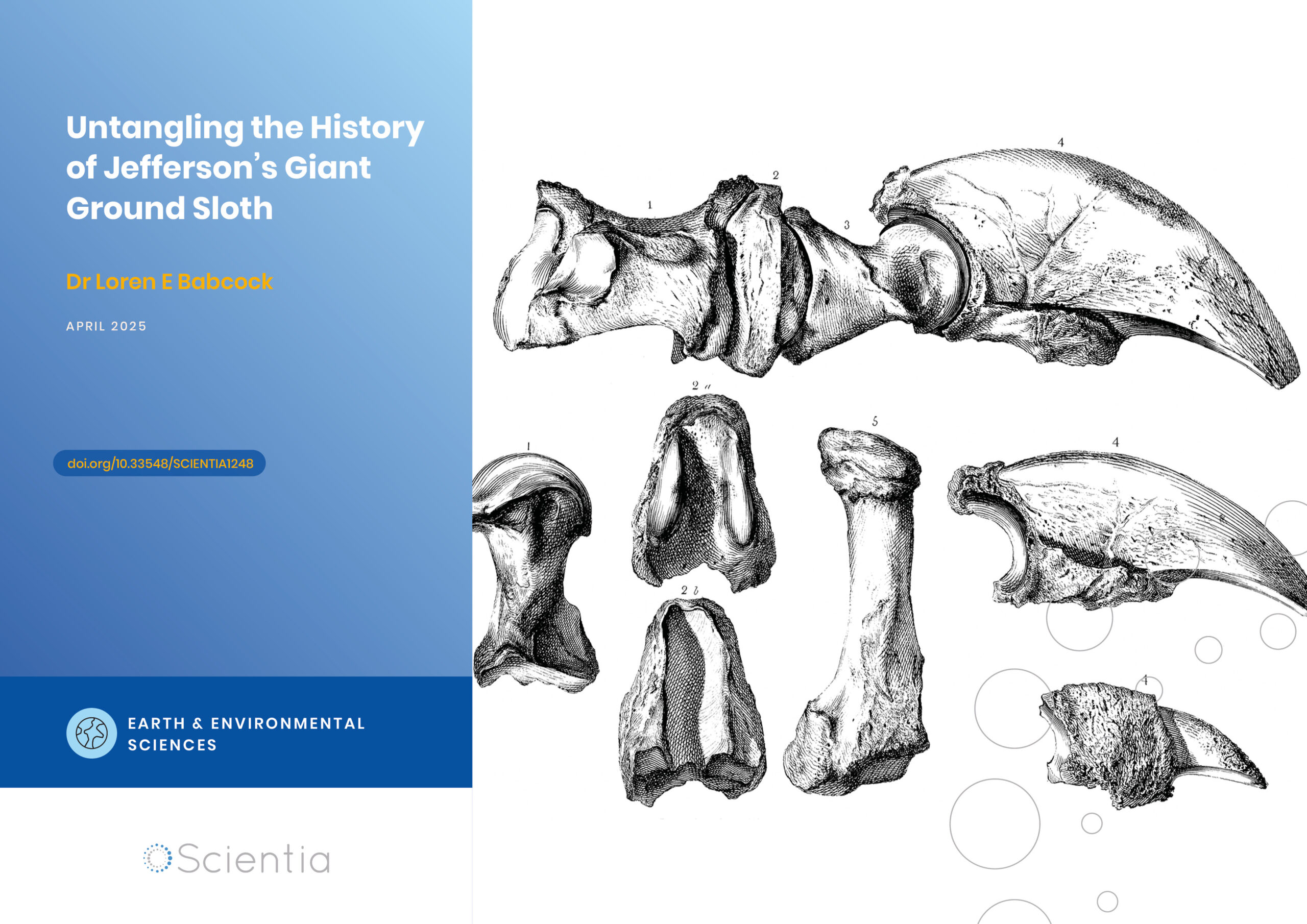Dr Francesco Pausata – Exploring the Sahara Desert’s Past to Understand Its Future
The Sahara Desert in Africa is one of the driest places on Earth. Because of its dry conditions, fine sand particles from the desert can easily become airborne, leading to dust emissions that affect the global climate. However, between 11,000 and 5,000 years ago, this region experienced wetter conditions, known as African humid period, causing reduced dust and a dramatic greening of the land. In the near future, human-induced climate change could dramatically alter rainfall patterns in the Sahara, causing reductions in dust emissions that may further impact the global climate. By examining past humid periods, Dr Francesco Pausata and his colleagues at the University of Quebec in Montreal aim to understand potential future changes.
The Saharan Climate
The Sahara in northern Africa is the largest hot desert on Earth. Because of its dry conditions, fine sand particles from the desert earth can easily become airborne. This mineral dust from the Sahara significantly affects the global climate. It scatters light from the Sun and influences cloud formation, consequently affecting atmospheric circulation, rainfall and storm formation. Changes in Saharan dust emissions are therefore inextricably linked to the global climate system.
However, the Sahara wasn’t always dry and dusty. During the early and middle Holocene – 11,000 to 5,000 years ago – the arid region transformed into grasslands with trees, lakes and rivers. The evidence for this Saharan ‘greening’ interval comes from several paleoclimate archives such as pollen found in sediments, along with archaeological evidence indicating that humans once lived, hunted and gathered deep within the current desert.
The Holocene greening is the last of a sequence of African humid periods. These are caused by the gradual shift in the orientation of Earth’s rotational axis, which occurs in cycles lasting about 26,000 years. During periods in this cycle when the African summer Sun is at its strongest, a larger temperature gradient forms between the land and sea. This increased gradient strengthens the African monsoon, bringing rainfall deeper into the Sahara.
The current period of climate change, caused by human emissions, could significantly impact the African monsoon. Greenhouse gases trap the Sun’s radiation close to the Earth’s surface. Land absorbs more radiation than water, heating up faster – again increasing the temperature difference between land and sea, which could strengthen the monsoon and bring increased rainfall to parts of the desert.
Mineral dust emissions from the Sahara depend on dry conditions, so they are susceptible to changes in rainfall. Therefore, the climatic impacts of future changes in dust emissions in the Sahara and the neighbouring Sahel region could be felt worldwide.
However, the impact of the greening of northern Africa and the African humid periods on the global climate is poorly understood. Scientists are particularly concerned about changes in rainfall patterns, which could impact agricultural production and communities. It could also affect tropical cyclones, some of the deadliest weather hazards.
By studying past Saharan greening events preserved in marine sediment cores, Dr Francesco S.R. Pausata and his colleagues at the University of Quebec in Montreal aim to understand these profound shifts in the desert climate. Scientists previously knew that the Sahara was wetter and greener in the past. However, there is uncertainty around which parts were wetter, how much wetter they were compared to today, and how this increased moisture affected the global climate. By answering these fundamental questions, Dr Pausata’s team is shedding light on current and future climate change.

Rainfall in the Desert
From 11,000 to 5,000 years ago, wetter conditions meant that the current Sahara Desert was home to diverse vegetation and human settlements. Understanding the rainfall rates, the extent of the wet conditions and their effects on human life in this period relies on analysing clues, such as pollen grains, preserved in sediment records.
Researchers often rely on marine and lake sediments to provide insights into past climates. Dr Pausata’s team analysed ocean sediments from four marine cores along the west African coast. These cores contain dust, pollen and other materials blown offshore from the land over the last 25,000 years. By analysing ocean sediments deposited over a wide area, the researchers revealed ancient rainfall patterns and the spatial extent of the Saharan greening.
The team measured carbon and hydrogen atoms with different numbers of neutrons in their nuclei – called isotopes – in waxy substances produced by plant leaves. This leaf wax washed into the ocean and was preserved in ocean sediments laid down during the greening period. The number of neutrons in the atomic nuclei of carbon and hydrogen are valuable tracers of rainfall and vegetation changes.
Dr Pausata and his colleagues found that the green Sahara period was associated with very high rainfall rates recorded in the sediment cores. Their isotope data across all the sites indicated that the green Sahara may have been up to ten times wetter than today. The region had a seasonal tropical climate, with most of the rain arriving in the summer monsoon. Wet conditions extended as far north as Morocco, but persisted for a shorter time here than in the southern Sahara.
The team also discovered a drier interval in the middle of the Saharan greening around 8,000 years ago. Lasting about 1000 years, this pause in rainfall caused humans to temporarily abandon the region, as indicated by archaeological records.
The abandonment of the southern Sahara coincides with a cultural shift among early humans. While those occupying the Sahara before the dry period survived by hunting, fishing and gathering, those who returned afterwards had a more diverse diet, subsisting partly on meat and dairy from cattle farming. Dr Pausata and his colleagues suggest that the changing climate was a powerful motivation to abandon hunting and gathering, which are very vulnerable to environmental change, in favour of cattle herding.

Climate Impacts of Increased Rainfall
The team found that rainfall dramatically increased during the greening of the Sahara. However, mathematical models could not reproduce these high rainfall rates, nor could they accurately simulate the full northward extension of the Saharan greening inferred through sediment analysis.
The researchers set out to understand the complex feedbacks between Saharan desert dust, vegetation, and rainfall in enhancing the intensity of the African monsoon. By incorporating the reduction in dust emissions and the vegetation changes into a mathematical climate model, they could replicate the observed rainfall during the greening phase. The absence of atmospheric dust allowed more solar radiation to reach the ground and be absorbed by a now darker vegetated soil, increasing the land-sea temperature gradient and strengthening the monsoon.
As the Saharan environment directly influences the global climate, understanding these feedbacks could improve scientists’ understanding of global atmospheric processes. For example, the El Niño-Southern Oscillation (ENSO) is one of Earth’s most fundamental climate phenomena. The ENSO is a cyclic warming and cooling of the equatorial Pacific that influences temperature and precipitation worldwide. It responds to changes in radiation from the Sun due to Earth’s orbital cycles, but this can’t explain the full range of past ENSO variability.
Using mathematical climate models, the researchers examined the impact of the Saharan greening on ENSO. They adjusted the models to account for the increased vegetation cover and reduced dust emissions in this period and found that modelling the Saharan greening reduced the predicted ENSO variation. The duration of El Niño events – the ENSO phase with warmer ocean surface temperatures – was reduced by as much as 50%. They also found that warm El Niño phases were shorter during the Saharan greening due to more intense monsoon rainfall, which cooled the Atlantic Ocean and affected its surface temperature variability. Such changes in the Atlantic could then impact the circulation in the equatorial Pacific, affecting the ENSO state and intensity.
Models of future climate change suggest that the West African monsoon could strengthen again in the future, causing changes in vegetation cover and dust emissions in the Sahara and Sahel regions. Dr Pausata and his colleagues have shown that these changes could have a considerable effect on ENSO variability. Their work shows that future climate change projections will have to consider potential changes in Saharan vegetation and dust.

Saharan Dust and Tropical Cyclones
Tropical cyclones are among the most destructive weather phenomena on Earth, claiming thousands of lives globally each year. They are intense, rotating storms that form over warm seas. Understanding their causes is essential for forecasting their future variability. However, historical records of cyclone activity are short, and sedimentary evidence is sparse. Therefore, scientists use mathematical models to investigate cyclone activity under different climate conditions and predict how it might change in the future.
Dr Pausata and his colleagues investigated how the environmental changes during the Saharan greening would have affected tropical cyclone activity. They ran model simulations that accounted for increased solar radiation in summer, increased vegetation cover, and reduced dust emissions.
Tropical cyclones are driven by heat and moisture from warm oceans. However, some previous studies had suggested cyclone activity could decrease in a warming world, despite warmer sea surface temperatures. Dr Pausata’s team found that when they considered the Saharan greening and reduced dust concentration, the models simulated a global increase in cyclone activity during the greening period. They found that the most significant rises in cyclone activity were in the Caribbean and along the East Coast of North America.
In our present climate, with its unprecedented rates of warming caused by human emissions, rainfall may increase in Sahara Desert. Dr Pausata’s research shows that a wetter Sahara and Sahel would profoundly impact our planet’s future. These impacts could be felt globally through the effects of decreased dust, and increased moisture and vegetation, on large-scale atmospheric circulation. The effects could include a reduced ENSO variation and an increase in the number of devastating tropical cyclones. Understanding the part climate of the desert is a crucial step in predicting and mitigating future climate change impacts.
Reference
https://doi.org/10.33548/SCIENTIA687
Meet the researcher

Professor Francesco S.R. Pausata
Department of Earth and Atmospheric Sciences
University of Quebec in Montreal (UQAM)
Montreal, QC
Canada
Dr Francesco Pausata gained his PhD in Geophysics from the University of Bergen, Norway, in 2010. After graduating, he worked as a postgraduate researcher at the European Commission’s Joint Research Centre and the University of Stockholm, Sweden. He currently holds the position of Associate Professor of Atmospheric Sciences at the University of Quebec in Montreal, Canada, where he also directs the master’s program in Atmospheric Sciences. Dr Pausata’s diverse research interests include past and current climate variability caused by human emissions, volcanic eruptions, vegetation changes and dust emissions. At the University of Quebec in Montreal, he supervises undergraduates, graduates and postdoctoral researchers alongside his research activities. Dr Pausata has been interviewed by national and international news outlets and has been awarded multiple honours and awards for his contributions to science.
CONTACT
E: pausata.francesco@uqam.ca
W: https://www.pausata-climate.com/
FUNDING
Canadian Foundation for Innovation, John R. Evans Leaders fund for research infrastructure (2020 – 2024)
FRQNT Program Samuel De Champlain (2019 – 2021)
NSERC discovery grant (2018 – 2022)
FURTHER READING
FSR Pausata, M Gaetani, G Messori, A Berg, DM de Souza, RF Sage, PB deMenocal, The greening of the Sahara: Past changes and future implications, One Earth, 2020, 2, 235.
FSR Pausata, Q Zhang, F Muschitiello, Z Lu, L Chafik, EM Niedermeyer, JC Stager, KM Cobb, Z Liu, Greening of the Sahara suppressed ENSO activity during the mid-Holocene, Nature Communications, 2017, 8, 16020.
FSR Pausata, KA Emanuel, M Chiacchio, GT Diroc, Q Zhang, L Sushama, JC Stager, JP Donnelly, Tropical cyclone activity enhanced by Sahara greening and reduced dust emissions during the African Humid Period, PNAS, 2017, 114, 6221.
JE Tierney, FSR Pausata, PB deMenocal, Rainfall regimes of the Green Sahara, Science Advances, 2017, 3, e1601503.
FSR Pausata, G Messori, Q Zhang, Impacts of dust reduction on the northward expansion of the African monsoon during the Green Sahara period, Earth and Planetary Science Letters, 2016, 434, 298.

Want to republish our articles?
We encourage all formats of sharing and republishing of our articles. Whether you want to host on your website, publication or blog, we welcome this. Find out more
Creative Commons Licence
(CC BY 4.0)
This work is licensed under a Creative Commons Attribution 4.0 International License. 
What does this mean?
Share: You can copy and redistribute the material in any medium or format
Adapt: You can change, and build upon the material for any purpose, even commercially.
Credit: You must give appropriate credit, provide a link to the license, and indicate if changes were made.
More articles you may like
Calculating Steering Friction: Essential Engineering for Military Aircraft Safety
The safe operation of military training aircraft depends on precise engineering calculations that most of us never consider. Dr Bogdan Adrian Nicolin and Dr Ilie Nicolin from the National Institute for Aerospace Research in Romania have developed sophisticated methods to calculate the steering friction moment in military aircraft. This critical engineering parameter ensures that pilots can safely control aircraft during taxiing, take-off, and landing – making their work essential for both pilot training and flight safety.
Professor Robert B Heimann | Culinary Craftmanship: The Evolution of Pottery for Cooking
Cooking food is arguably one of the most important transitions in human evolution, and initiated hundreds of thousands of years of refinement in both technique and technology. Professor Emeritus Robert B Heimann of TU Bergakademie Freiberg, Germany, recently reviewed the evidence for early cooking vessels and tracks the evolution of their production, identifying important strategies of optimisation using various natural materials, firing methods, and designs to improve durability, functionality, and efficiency over time.
Dr Loren Babcock | Untangling the History of Jefferson’s Giant Ground Sloth
In the spring of 1796, workers mining saltpetre in a western Virginia cave unearthed several unusual bones. This would launch the scientific study of extinct animals in North America and connect one of America’s founding fathers to the early development of palaeontology. Some of these mysterious bones eventually made their way to future US President Thomas Jefferson at his Monticello estate. Dr Loren Babcock from The Ohio State University’s School of Earth Sciences has conducted an extensive review of the complex naming history of this iconic extinct animal. His research untangles over 200 years of inconsistent scientific terminology and establishes the definitive nomenclatural history of what would become known as Megalonyx jeffersonii.
Epigenetic Mysteries Unravelled: The Zinc-Finger Proteins
Exploring the complex mechanisms of cell development processes and DNA structure is critical to understanding how certain diseases, such as cancer, can arise. Professor Danny Reinberg and Dr Havva Ortabozkoyun from the University of Miami in Florida, USA, work to reveal the epigenetic mechanisms at play during cell division and development and, in turn, disease processes. Together, they are discovering new protein molecules involved in genome organisation, deepening our understanding of how cancers and other related conditions can develop.




